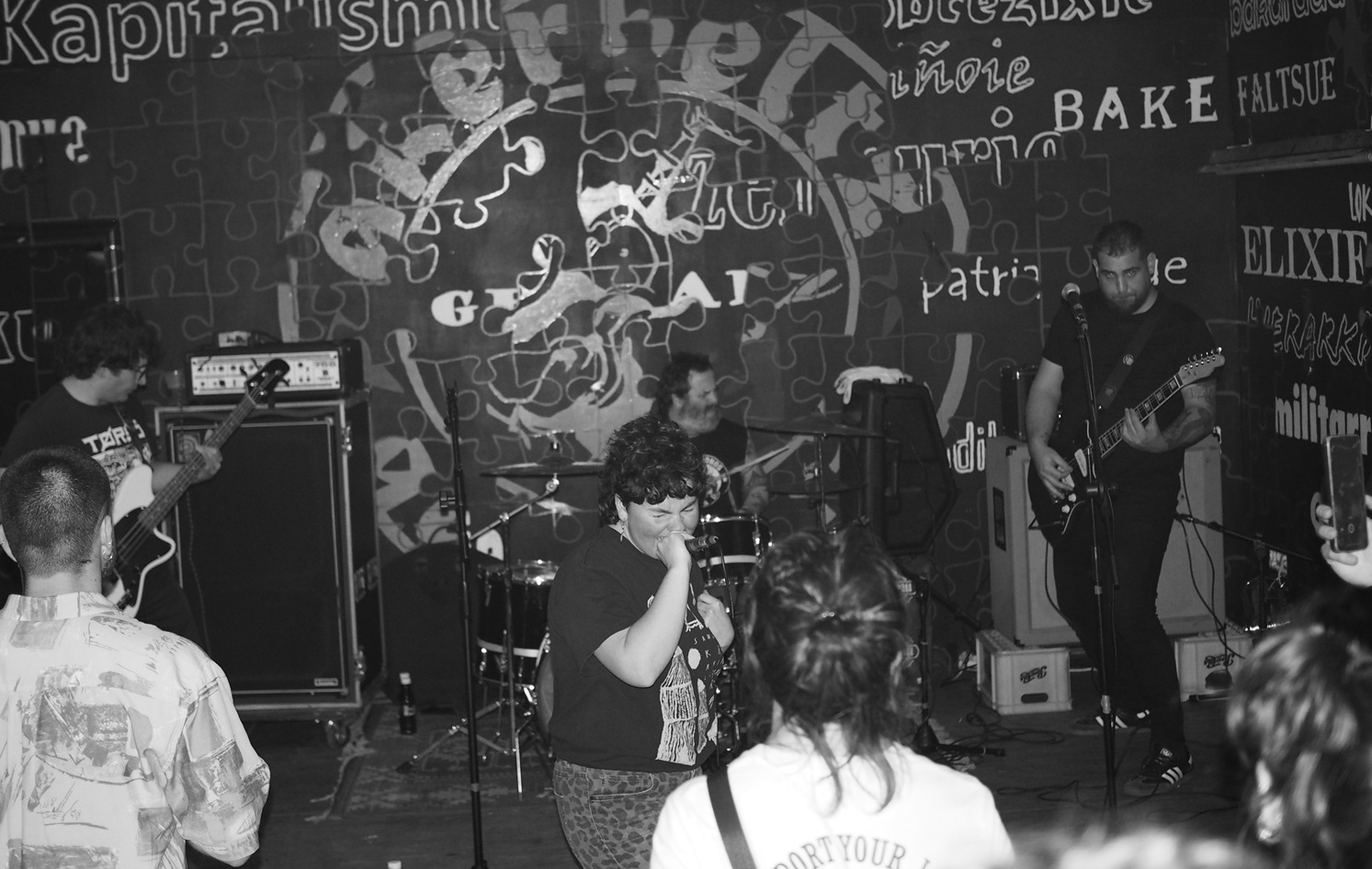Polyphony of life
- Last year was the centenary of the birth of jazz musician Charles Mingus (Nogales, Arizona, USA 1922 - Cuernavaca, Mexico, 1979). He is one of the composers, instrumentalists and leaders of the jazz history band. His shadow looks like Duke Ellington, Thelonious Monk, Charlie Parker, John Coltrane or Miles Davis. No doubt, a genius of talent.

In order to remember the centenary of the great double bass player, the editorial Libros del Kultrum has republished the Spanish translation of Mingus's famous autobiography: Beneath the Underdog: His World as Composed by Mingus (Less than a dog: the world he composed). Three texts not collected in previous editions in Spanish have been added to the reissue.
“Irritable”, “sharp”, “clumsy”, “rudo”… Mingus was a wild musician whose personality was materialized in similar adjectives. For example, at one of his concerts in Philadelphia he suddenly ended his performance, closing the cover of the piano and breaking almost the pianist's fingers, and then giving the Jimmy Knepper a slap in his mouth. So they called him the Rabid Man of Jazz. Despite this violent character, it was shown as a love. In his biography he noted that several Mingus lived inside Mingus.
Thus, he lived a polyphonic life of eleven voices and moods in his cavities. He also incorporated in his music elements of complicated experiences such as gospel and blues, jazz in the city of New Orleans, avant-garde jazz or classical music. One of his major influences was the musician Duke Ellington, who once stated that Ellington and the Church were his main influences. He received his sound and his harmonies, adding dissonances, sudden changes in time and accelerations.
Mingus production is hard and productive. However, for the artist, her best record work is Tijuana Moods (RCA, 1962). In the late 1950s, he arrived at the border city between the United States and Mexico after a mistress. Thus, in Tijuana he gathered “the sense and the seen”: night atmosphere, tequila, tacos, spicy chili, mariachis and wagers. It's a play that combines chestnut sounds with free jazz. Excessive in the best sense.
Continuous verbal fluency
In the biography written by Mingus, music has hardly any presence. Jazz arranges the book but brings nothing to the content. The arrival of the double bass player is constant and indiscriminate and the book is articulated through interviews that connect with the energy of the frenetic rhythm of jazz. After two decades of work in the shale of his life, he published the autobiography in 1971, but was already very sick with amyotrophic lateral sclerosis, which died eight years later. This colossal effort led him to occupy 1,500 pages written in third person and an editor brought this intense work to 384 pages. With this editing work, the reader will know little about the musician, but will know his painful ego. Casetas, palaces, psychiatry and jazz holes are the essence of the book, where women and blackening are the central themes. Thus, the story takes the form of a fictional biography and it is difficult to know what is true and what lies, what fantasy and sexual invention, what real fact and an unfortunate anecdote of childhood. Mingus's wife, Sue Graham, acknowledged that many of the topics in the book were invented by the musician. However, these facts are fun and emotional, and are reported with lyricism and crudety, due to the unstoppable charlatry poured out. Beat was fashionable near literature.
The report is based on childhood and adolescence at the Watts periphery of Los Angeles. My father, a former military, was a belt bug. The stepmother was also fundamentalist and repressive, who at all times whistled Bible quotes. In his book Mingus directed his and two. As a young man, he tried to study classical music, but since classical was a field for whites, he had to play jazz. “You’re black. Even if it's good, you'll never get anything in classical music. If you want to play, you'll have to play a black instrument. You can’t touch the cello, so you’ll have to learn to touch the underside, Charlie!” He then highlighted in environments plagued by pimps, urdanga, camels and criminals. He finally arrived in New York City, where he lived his best times. Lionel Hampton, Billy Holiday, Fats Navarro and Charlie Parker were alongside major jazz musicians. It also tells the moment he visited Belleuve, a psychiatrist who was plunged into depression.
As a young man, he tried to study classical music, but since classical was a field for whites, he had to play jazz.
Women are the central axis of the story. In the 1940s, Mingus began a dizzying sexual journey. He recognized that he had 31 love issues in his life and that he slept with about twenty women in one program. “I’m more a man than any white kaiku and dirty. I did it with 23 women one night, including the woman of the boss (…) I did it because I wanted to kill and hoped I would kill myself. But when I returned from Mexico, I felt satisfied, so I left him.” Of course, it is not that I confirm it. He highlights the support for the musician's polygamy, which had five wives, two of them converted into sex workers. For a while, he ended up being a pimp.
The second central theme that crosses the story is negritude, as the book can be considered a chronicle of the social and economic climate of the time. Mingus was embarrassed to be black from a young age. Moreover, his skin was not very dark, so his black was not enough for the rest of the blacks either. As a result, he was always in trouble with blacker insults than him. Mingus's mother was the daughter of a man of English and Chinese origin and of a South American woman, and her father was the son of a black laborer of married and a Swedish woman. “I’m Charles Mingus. Half black man, half yellow, not yellow, as white as to stop being black, not as clear as to call you. I consider myself black. I'm Charles Mingus, I think I don't have color. I am Charles Mingus, a famous jazz musician, but not so famous in my house as to survive in the United States.” The original title of the autobiography focused precisely on that mestizo character that radically influenced his personality: Memoirs of a Half Yellow Schitt Covered Nigger (Memories of a Black Shitted Kaka). But the editor justified the title.
Aposapo + Mäte + Daño Dolor
When: April 5th.
In which: In the Youth Center of Markina-Xemein.
---------------------------------------------------------
I’ve made my way to the cheese house with the shopping cart full of vegetables, and we’ve spent the evening cutting... [+]
Poliorkêtês
Kerobia
Autoekoiztua, 2025
--------------------------------------------------------
Azken aldian, lerrootan asko nabil hausnartzen musikak izan beharko lukeen “misio historikoaz” eta abarrez. Eta, nolabait, zer egin beharko lukeen... [+]
On March 7, the 150th anniversary of the birth of Maurice Ravel, the best Basque composer of all time. And in LA LUZ a tribute was paid to this composer, recalling the influence of the famous Bolero on the collective imagination.
By chance, Deutsche Grammophon has just released... [+]
Olatz Salvador
Noiz: martxoaren 15ean.
Non: Deustuko jaietan.
------------------------------------------------
Martxoak beti du deustuarrontzat kolore berezia; urtero ospatzen ditugu jaiak, San Jose egunaren bueltan. Bi asteburu bete festa, eta urtetik urtera Deustuko... [+]
Antifa hardcore
Lee-Kore + Hoben
Autoekoizpena
---------------------------------------------------------
Tamalez ez da ohikoa Arrasaten hardcore kontzertuak egitea, bestelako musika eszenak nagusitzen direlako. Hala bada, joan den larunbatean herriko gazte batzuen... [+]
Hunkituta eta ilusioz egin dut Iruñetik Oronozerako bidea. Maite dut Olaia entzutea, baita hizketan ere. Herriko farmaziaren ondoan autoa utzi eta balkoitik agurtu naute hark eta bere zakur Arak. Grabagailua martxan jarri aurretik, bueltaxka egin dugu frontoira eta Arak... [+]
Bizitza eztia
Verde Prato
Plan B Records, 2024
--------------------------------------------------------------
Ousmane Sembène zinemagile senegaldar ospetsuari galdetu zioten ea bere pelikulak Europan ulertzen ote ziren. Erantzuna, epikoa: “Izan gaitezen... [+]
Inoren Ero Ni + Lisabö
Noiz: martxoaren 14an.
Non: Gasteizko Jimmy Jazz aretoan.
----------------------------------------------------
Izotz-arriskuaren seinalea autoko pantailatxoan. Urkiola, bere mendilerro eta baso. Kontzertuetara bideko ohiko errituala: Inoren... [+]
FITXA
Zer: OLBEk antolatutako Gaetano Donizettiren ‘La favorite’ opera.
Nork: Euskadiko Orkestra Sinfonikoak (zuzendaria: Riccardo Frizza) eta Bilboko Operaren Abesbatzak (zuzendaria: Boris Dujin).
Noiz: otsailaren 18an.
Non: Bilboko Euskalduna Jauregian.
























